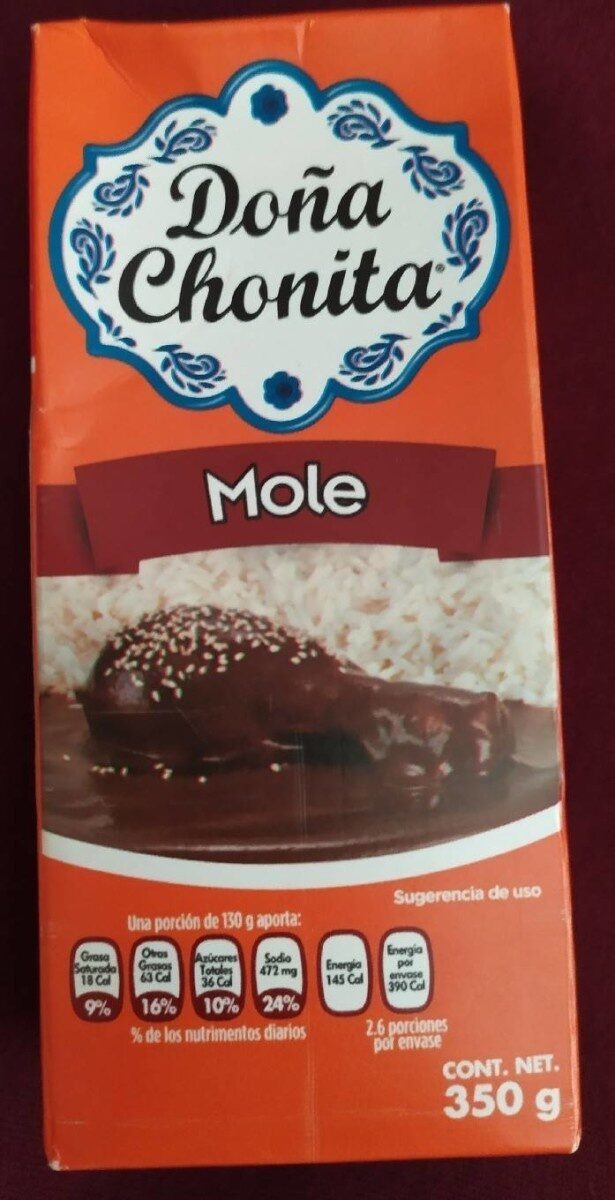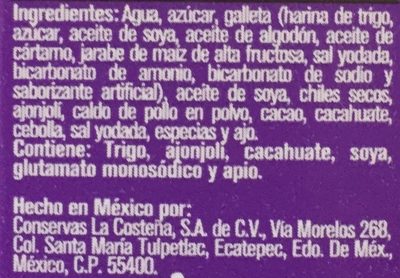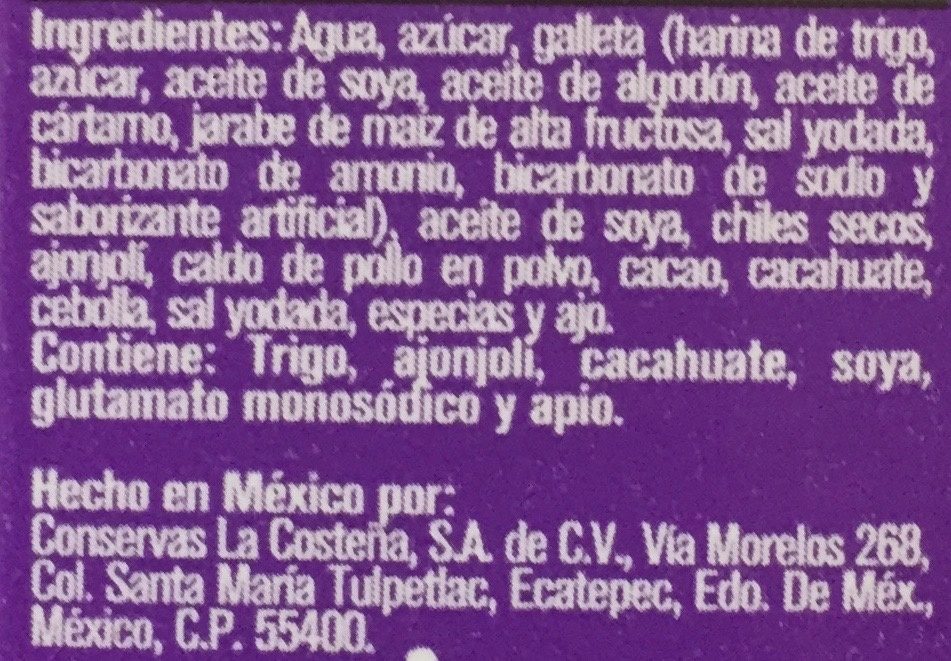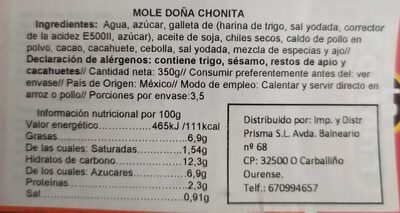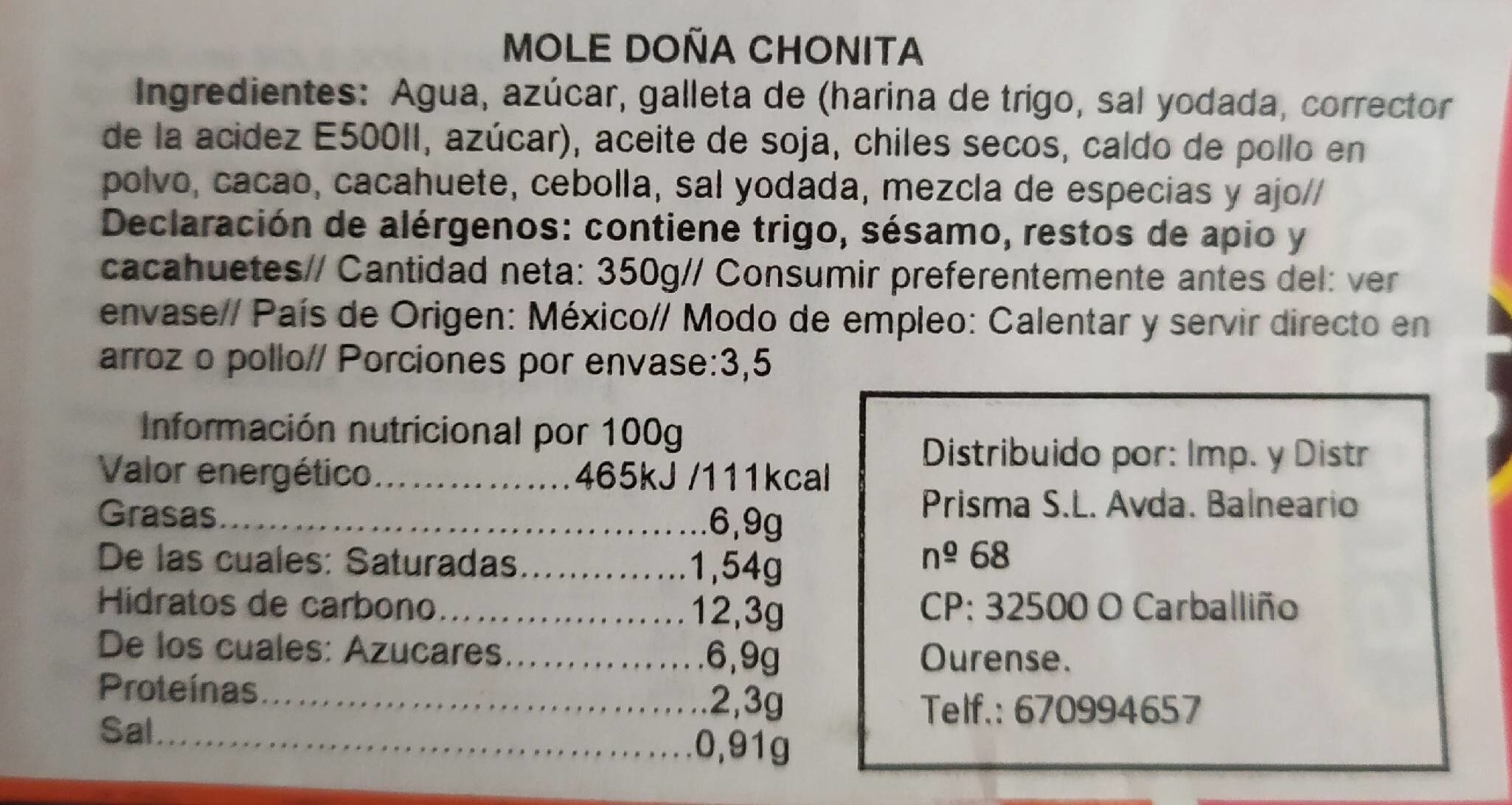Mole Doña Chonita - La Costeña - 350 g
This product page is not complete. You can help to complete it by editing it and adding more data from the photos we have, or by taking more photos using the app for Android or iPhone/iPad. Thank you!
×
Barcode: 0076397007656 (EAN / EAN-13) 076397007656 (UPC / UPC-A)
Common name: Mole
Quantity: 350 g
Packaging: Tetra Pak
Brands: La Costeña
Categories: es:Moles, es:Productos de origen vegetal
Origin of ingredients: Mexico
Manufacturing or processing places: Estado de México
Link to the product page on the official site of the producer: http://www.lacostena.com.mx
Countries where sold: Mexico
Matching with your preferences
Environment
Packaging
Transportation
Report a problem
Data sources
Product added on by openfoodfactsmx4
Last edit of product page on by packbot.
Product page also edited by kiliweb, yuka.sY2b0xO6T85zoF3NwEKvllwfWerY-Aj0GhPiv1Ha6NKgdZvOU9pU44PKa6o.

